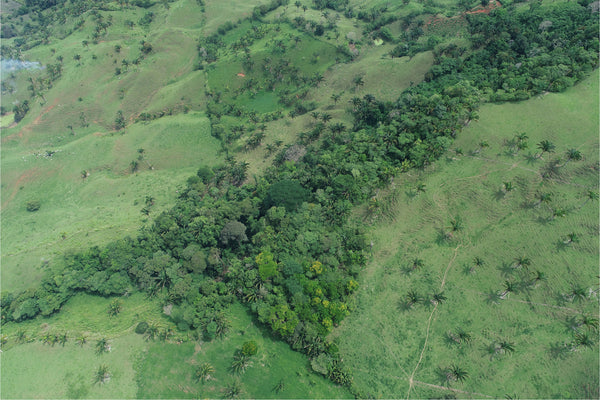This Earth Day, Ask “Where’s The Forest?”
WTF?Look, we know that the timing is slightly suspicious, but we solemly swear that this is not an April Fools joke. In fact, when it comes to tree cover loss, we couldn’t be more serious. According to the 2022 State of the World’s Forests report, forests currently cover around 31% of Earth’s land surface (approximately 4.06 billion ha). Unfortunately, that area is shrinking, and we lost a staggering 420 million hectares our forests to deforestation between 1990-2020 alone. Among the countless other benefits that they provide, trees are a top climate change solution thanks to their ability to absorb and store carbon — in fact, it is estimated that forests currently absorb around 30% of our global carbon emissions. With the impacts of climate change becoming more prevalent every day, it is more important than ever to ask: Where’s The Forest?
Nowhere is deforestation more apparent than in rainforest ecosystems around the world. In 2019 alone, it is estimated that we lost a football pitch of primary rainforest every 6 seconds. Nearly a third of that loss, 3.8 million hectares, occurred within humid tropical primary forest. These areas of mature rainforest are especially important for biodiversity and carbon storage.
With Earth Day right around the corner, we are zooming in on rainforests around the world to protect people’s homes and livelihoods, restore vital habitat for biodiversity, combat the climate crisis, and more.

Why Is It So Important to Protect and Restore Rainforest Ecosystems?
You know that rainforests are being deforested and degraded at an alarming rate, but why is it so important to protect them? Planting trees in rainforests is vital because they are critical ecosystems that support a breathtaking range of species, many of which are found nowhere else on the planet. The Amazon Rainforest alone contributes approximately 20% of the breathable oxygen that is produced on land via photosynthesis (phytoplankton contribute a staggering 70% of all Earth’s oxygen).
Need another reason? Rainforest plants are used in some of the world’s most important, life-saving medicines — in fact, more than 60% of anticancer drugs originate from natural sources. Many rainforest and tropical forest ecosystems are home to indigenous people and local communities (IPLC) who have stewarded the land for generations and rely on it for their traditional ways of life. These reasons are compelling enough on their own, but the reality is that they just scratch the surface of why we need to protect and restore rainforest ecosystems.
Planting a tree in the rainforest is the perfect way to restore forests and celebrate Earth Day. Plant a tree today!
